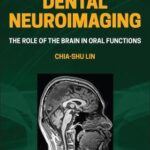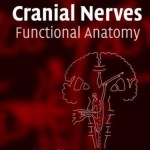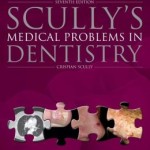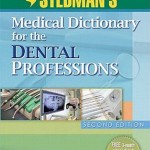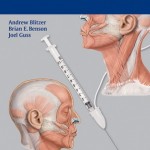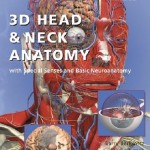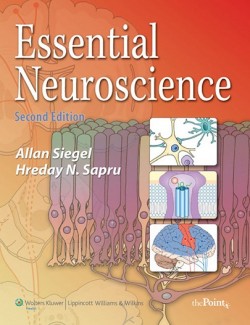 By
By
Allan Siegel, PhD, Professor, DO Neurology and Neurosciences, DO Psychiatry, Hreday N. Sapru, PhD, Professor, DO Neurological Surgery, DO Neurology and Neurosciences, DO Pharmacology and Physiology, UO Medicine and Dentistry of New Jersey
Book Description
As burgeoning research advances the field of neuroscience, instructors face the formidable challenge of imparting this ever-increasing and heterogenous body of information to students. Essential Neuroscience, Second Edition is the coherent, balanced solution.
Rated outstanding with highest 5-star ranking in the Mayo Clinic Proceedings.
This highly acclaimed second edition covers fundamental neuroscience topics, integrating essential information with clinical and physiological considerations, providing students with multiple opportunities for review and self-testing, and presenting the latest relevant developments in neuroscience.
Proven building-block approach preferred by faculty and students alike.
Beginning with the building block of neuroscience, the neuron, the text unfolds the story of human brain function. From analysis of a single neuron, the authors enlarge the discussion to neuronal communication; guide us through the essentials of spinal cord and brain anatomy; detail the sensory, motor, and integrative systems; and finally illustrate the most complex functions and dysfunctions of the nervous system. This stepwise, basic-to-complex approach is the synthesis of 30 years of teaching experience and improves student performance on exams.
NEW FEATURES:
- Enhanced topics throughout
- Integration of material where sequentially and functionally relevant
- More than 50 revised and 8 all-new illustrations
- Chapter Summary Tables
- Expanded Glossary
- In-depth study of selected topics to accommodate dental students
INSIDE YOU’LL FIND:
- Six sections organize chapters into cohesive blocks of information.
- Learning Objectives launch each chapter by focusing students on key chapter information.
- Updated, full-color art program abounds with more than 400 illustrations and neuroimaging that reflect appropriate detail and complement the text.
- Tables and outlines organize chapter material in high-yield format for effective student review.
- Concise yet comprehensive presentation of material ensures that students learn what they need to know without bogging them down with excess information.
- Balanced integration of anatomy, biology, physiology, and chemistry gives students a well-rounded understanding of neuroscience.
- In-depth coverage of topics frequently tested on the United States Medical Licensing Examination (USMLE)—including structure, function, and deficits of individual cranial nerves; vascular syndromes of the brainstem; and behavioral disorders—gives students an edge in test prep.
- Latest developments in neuroscience keep students at the front of discovery.
- Clinical Cases provide the clinical application of chapter concepts.
- USMLE-style and course review-style questions test retention of key concepts in each chapter and help students prepare for course and board examinations.
- Comprehensive Glossary defines key terms and concepts bolded throughout the text.
- Online access via thePoint to the fully searchable text (including images), an image bank for faculty with labels on/off, interactive Q&A, and more.
Editorial Reviews
Review
Customer Reviews
Good if you already know your Neuro. Excellent reference, not for beginner learning., June 5, 2010
I’m a UCSF Dental student. We’re going through our Neurology II block currently and all the professors that teach Neuro highly recommended buying the book (what student buys books these days when they’re all on PDF…). They said things like “oh its so good and concise and easy to read and has all the necessary information and you’ll be using it forever…” Not the case
If you already know your Neuro decently well (which I thankfully do), this book is great as it definitely refreshes your memory quick and builds upon what you know. It does a good job at giving you the bigger picture. If you’re a beginner to the world of Neuro, I urge you to stay away from this book as it is very much written in the language of Neurology rather than in a way to teach a beginner.
For what we’re using it for, its in complete excess. That being said, it will be a book I keep on my very VERY small shelf of books. The information inside is not stuff that can be easily and accurately found on the internet (or wiki). If I need to look something up such as a condition or a mechanism, its excellent. It may even spark my interest to learn more about certain topics.
Bottom line:
this is not a very good ‘teaching’ book as it is a very dense read and heavily based in the language of Neurology. its a book for those that already know general Neurology. Highly informative and well written. A VERY good reference book as it DEFINITELY contains “Essential Neuroscience” knowledge that any MD/DDS/OMFS should have an idea about.
Good Introduction to Neuroscience, August 15, 2011
The book does cover the essential basics of neuroscience. It is not, however, detailed or in-depth, as some other reviewers would have you believe. This book would serve well as an introduction to neuroscience for an undergraduate course, or if one needs a brief review of neurophysiology/neuroanatomy.
Product Details
- Paperback: 592 pages
- Publisher: Lippincott Williams & Wilkins; Second edition (April 19, 2010)
- Language: English
- ISBN-10: 0781783836
- ISBN-13: 978-0781783835
- Product Dimensions: 10.8 x 8.4 x 0.9 inches
- Shipping Weight: 3.1 pounds
Download
Link Mediafire 2nd Edition
Dental eBooks’ Library



